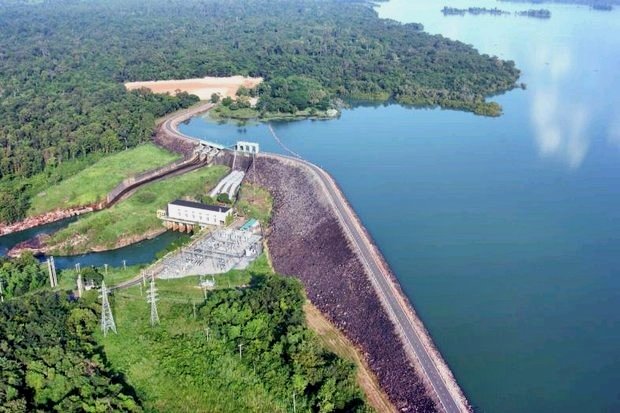
State-run Electricity Generating Authority of Thailand (Egat) expects to request the cabinet acknowledge and approve its massive investment plan for floating solar hybrid power generation at nine dams nationwide.
Egat says the project will be the world's largest hybrid power scheme from hydro and solar.
The pilot location is Sirindhorn hydropower plant and dam in Ubon Ratchathani province, at which Egat will install floating solar panels with a capacity of 45 megawatts, with a development cost of 2 billion baht.
Thepparat Theppitak, Egat's deputy governor for power plant development and renewable energy, said that once the cabinet approves the huge project, Egat will seek companies to sign engineering, procurement and construction contracts.
"We aim to distribute electricity output to the main grid in 2020," Mr Thepparat said.
Under the national power development plan (PDP) for 2018-37, floating hydro-solar hybrid projects will be open for international bidding, though the government wants to encourage local companies to join the auction.
"The local market has limited providers for solar panels and floats, and the feed-in tariff (FiT) has to stay at or below 2.44 baht per kilowatt-hour," Mr Thepparat said.
The new PDP calls for floating hydro-solar hybrid projects with a total capacity of 2,725MW. Egat is preparing human resources and related infrastructures to invest in all nine dams: Sirindhorn (Ubon Ratchathani), Ubol Ratana (Khon Kaen), Bhumibol (Tak), Srinakarin (Kanchanaburi), Vajiralongkorn (Kanchanaburi), Chulabhorn (Chaiyaphum), Bang Lang (Pattani), Ratchaprapha (Surat Thani) and Sirikit (Uttaradit).
"Together the nine dams are expected to contribute 2,725MW to the grid by 2037," Mr Thepparat said. "Egat will evaluate the outcome from the Sirindhorn dam to design an auction package for the eight remaining dams, expecting the cost of solar panels to decline with the FiT rate in the future."
He said Egat will have the rights to construct and operate hydro-floating solar hybrids under the new PDP.
The proportion of the country's power generation controlled by Egat will decline from 34% in the previous PDP to 24%.
Egat will prepare to be a system administrator for the country's power generation to handle future business trends in renewable power such as household solar panels and peer-to-peer power distribution.
Egat is developing a micro energy management system, which is software for a smart micro grid. The software will monitor overall power generation and security.
Egat expects to complete software development within 1-2 months, using Egat's R&D budget of 50-60 million baht.
"Once this project is operating efficiently, the government will develop it to be on the national energy trading platform, cooperating with the state-run Metropolitan Electricity Authority and Provincial Electricity Authority for the next step," Mr Thepparat said.